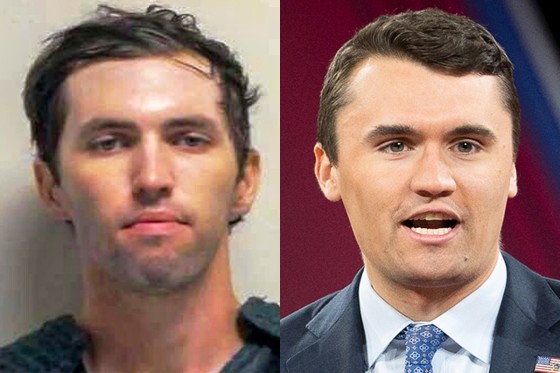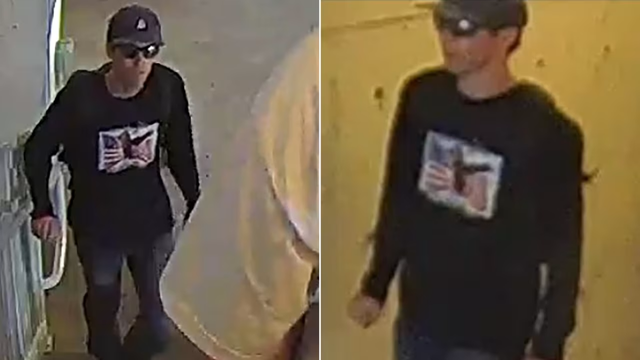
“Inside the 7-Minute Gap Before Police Arrived — The Hidden Footage That Changed Everything — Why Former Agents Believe the Cleanup Happened Too Fast to Be a Coincidence”
For weeks, the public believed they understood the timeline. The official report suggested that what happened in those tense minutes before police arrived was chaotic but straightforward — an emergency response in progress, a scene secured, a tragedy recorded.
But now, newly surfaced video has reignited the conversation and raised serious questions that no one seems ready to answer.
The footage, quietly leaked online and verified by multiple independent analysts, captures
a 7-minute window that had been mysteriously absent from the initial reports. What’s shown in that footage has experts — including former federal agents and private investigators — questioning whether those seven minutes might hold the key to understanding everything that happened that day.

The Video No One Was Supposed to See
The clip begins abruptly.
A timestamp flashes: 8:42 p.m.
It shows what appears to be a team of uniformed security personnel moving through a restricted hallway. Their actions seem deliberate — one wipes a metallic surface, another collects an object into a black evidence-style pouch, and a third gestures sharply toward a camera before turning away. The atmosphere is tense but silent. There’s no panic, no chaos. Just quiet precision.
Then, suddenly, the footage cuts to static.
The next recorded frame — 8:49 p.m. — shows police vehicles pulling up outside.
Those missing seven minutes are now at the center of a mystery that refuses to fade.

Experts Say Timing Doesn’t Add Up
Former FBI investigator Darren K. Willis, who reviewed the clip frame by frame, told The Sentinel Review that the behavior captured on tape is “not consistent” with a spontaneous or panicked response.
“You don’t move like that if you’re reacting in real time,” Willis said. “That kind of coordination — it suggests prior instruction. Someone knew what they were supposed to do before law enforcement got there.”
Other experts agree.
Security footage from the same area, released weeks earlier, shows a few bystanders standing near the entrance, unaware of what’s happening inside. But the leaked hallway footage — the one missing from official archives — reveals a completely different picture.
“If this footage is authentic, then it represents a serious procedural lapse,” said retired Homeland Security analyst Cynthia Morales. “Evidence control is critical in any high-profile case. The idea that personnel were touching, collecting, or altering objects before officers arrived is deeply concerning.”

Why Was the Video Missing?
That’s the question investigators can’t seem to answer.
When the footage first emerged, the response from officials was immediate — “unauthorized leak, under review.” But no one denied its authenticity.
According to multiple insiders familiar with the chain of custody, the video was originally part of the surveillance package collected the night of the incident. However, due to what was described as a “data synchronization error,” it wasn’t included in the final timeline released to the public.
That explanation isn’t satisfying everyone.
“We’re supposed to believe a seven-minute clip — right in the middle of the most critical window — just didn’t sync?” asked Lena Hartwell, a forensic video analyst who has worked with several major networks. “That’s not how these systems fail. You might lose seconds. But seven minutes? That’s deliberate.”

The Silent Signals
Analysts have paid close attention to the gestures seen in the footage — small, seemingly subtle hand movements between personnel.
At first glance, they could mean nothing. But to trained eyes, the coordination looks practiced. Two individuals appear to communicate without speaking — one tilts his wrist, the other nods slightly before moving toward a cabinet.
Former Secret Service protective operations consultant James Weller told investigators that such signals are “commonly used in high-risk security protocols — but not by civilian personnel.”
“This isn’t your average security team,” Weller said. “Their posture, their pace, their nonverbal communication — this looks like a tactical cleanup team. Whether that’s their intent or not, that’s how it reads.”
If that’s true, the next question becomes: Who were they working for?

The Vanishing Evidence
In the official inventory of items recovered from the scene, several details don’t align with what’s visible in the leaked footage.
Viewers can spot what looks like a metal casing being placed into a black pouch. But in the released police records, there’s no mention of such an object.
“Either that casing was logged separately under a restricted file,” said one independent researcher, “or it was never submitted at all.”
Adding to the confusion, internal memos referenced by anonymous sources suggest that “non-law enforcement personnel” may have entered the area during the initial response. That note, however, was later redacted in the final version of the report.
It’s not proof of wrongdoing — but the pattern of omissions has led to mounting frustration among those following the case closely.
A 7-Minute Gap with Too Many Questions
If you map out the official sequence of events, the timeline has a clear hole:
-
8:41 p.m. — Incident detected, security alerted
-
8:42 to 8:49 p.m. — No verifiable record
-
8:50 p.m. — First police response logged
That means the people inside had roughly seven minutes — long enough to clean surfaces, collect evidence, and reset parts of the scene.
Was it standard protocol? Or something else entirely?
“Seven minutes doesn’t sound like much, but in forensic terms, it’s everything,” said Dr. Ethan Lowe, a former crime scene reconstruction expert. “If anything was altered, removed, or contaminated, you can never fully recover the truth.”
The Chain of Command Problem
One of the more disturbing revelations concerns who actually had authority over the location before police arrived.
Records show that private security contractors had been assigned to the area, but their exact employer remains unclear. Was it a local property firm? A political organization? A subcontracted security service?
Requests for clarification have been met with silence.
A spokesperson for the local department confirmed that “certain personnel were present prior to law enforcement,” but refused to comment further, citing “ongoing internal review.”
“That’s the kind of phrasing you use when you’re trying to contain damage,” said investigative journalist Mark Hensley, who’s covered federal oversight cases for over a decade. “You don’t say ‘ongoing internal review’ unless you’re aware something wasn’t handled properly.”
The Role of Technology
Forensic specialists analyzing the footage point to an interesting technical detail — a visible interference pattern in the timestamp overlay.
To the untrained eye, it looks like static. But experts claim it could indicate an intentional data splice.
“There’s a faint compression artifact between frames 188 and 190,” said Dr. Aisha Patel, a digital forensics lecturer at Columbia University. “That’s a telltale sign of manual editing. Someone either cropped or replaced those frames — likely to obscure a movement or object.”
Patel emphasizes that the evidence is inconclusive, but combined with the missing minutes and inconsistencies in reports, it paints a troubling picture.
Why Were Witnesses Told to Stay Quiet?
Several individuals who were reportedly nearby that night have declined to speak publicly.
One anonymous hospital staff member, when approached by journalists, said only:
“I can’t talk about that. We were told it’s better not to.”
Another individual who had previously agreed to an interview with an independent podcast suddenly withdrew, citing “personal safety concerns.”
This silence has added to public suspicion that a coordinated effort might be in place to minimize discussion around the footage.
“That kind of collective silence doesn’t happen unless there’s fear — or instruction,” said retired investigator Willis. “And both of those should worry people.”
The Online Backlash
As soon as clips of the footage began circulating online, social media exploded with speculation.
Some called it “the missing puzzle piece.” Others accused the leakers of spreading misinformation. Hashtags like #7MinuteGap and #HiddenFootage began trending within hours.
Tech platforms quickly moved to remove edited or misleading versions of the video, but the debate didn’t stop.
Analysts say this case has become a mirror of modern information warfare — where truth, perception, and digital control collide.
“Once something like this gets out,” said sociologist Dr. Felicia Grant, “it’s no longer about what’s true. It’s about what people choose to believe. And that belief can shape the reality that follows.”
A Deeper Pattern?
What’s most unsettling is that this isn’t the first time investigators have reported “gaps” or “lost footage” in high-profile cases involving complex environments and multiple agencies.
“It happens when there are overlapping jurisdictions — or when someone with power wants a version of the story to prevail,” said Hensley. “You don’t have to fabricate data. You just have to make part of it disappear.”
Those missing minutes — seven of them — may be the difference between a clean narrative and a messy truth.
Why Former Agents Are Speaking Out
In recent days, several retired agents have begun speaking more openly about the footage. They’re not making accusations — but they are calling for transparency.
“You don’t fix public trust by burying inconvenient details,” said former DHS official Morales.
“You fix it by showing everything, even the uncomfortable parts.”
That’s why a growing coalition of analysts and civic groups is now demanding that the full unedited surveillance timeline be released — every second, every frame, from every camera in the area.
Their argument is simple:
If there’s nothing to hide, why not show everything?
What Happens Next
Sources close to the inquiry say a formal review of the video chain of custody has begun. The process could take weeks, possibly months.
In the meantime, speculation will continue to swirl — fueled by each new snippet of information that surfaces online.
“The truth has a strange way of resurfacing,” said Weller. “Even when people try to bury it.”
Whether that truth ever reaches the public intact remains to be seen.
The 7-Minute Mystery That Refuses to Die
Every story has gaps. Every investigation has shadows.
But in this case, the 7-minute gap feels less like an accident and more like a message — one written in silence, erased footage, and unanswered questions.
Was it a routine cleanup? A misunderstood protocol? Or something far more deliberate — a quiet act meant to erase the final traces of what really happened?
No one can say for certain.
But one thing is clear: until those missing minutes are accounted for, the story isn’t over.
And as the footage continues to circulate, experts, investigators, and the public will keep asking the same haunting question:
What really happened in those seven minutes before the police arrived — and why was the world never meant to see it?

